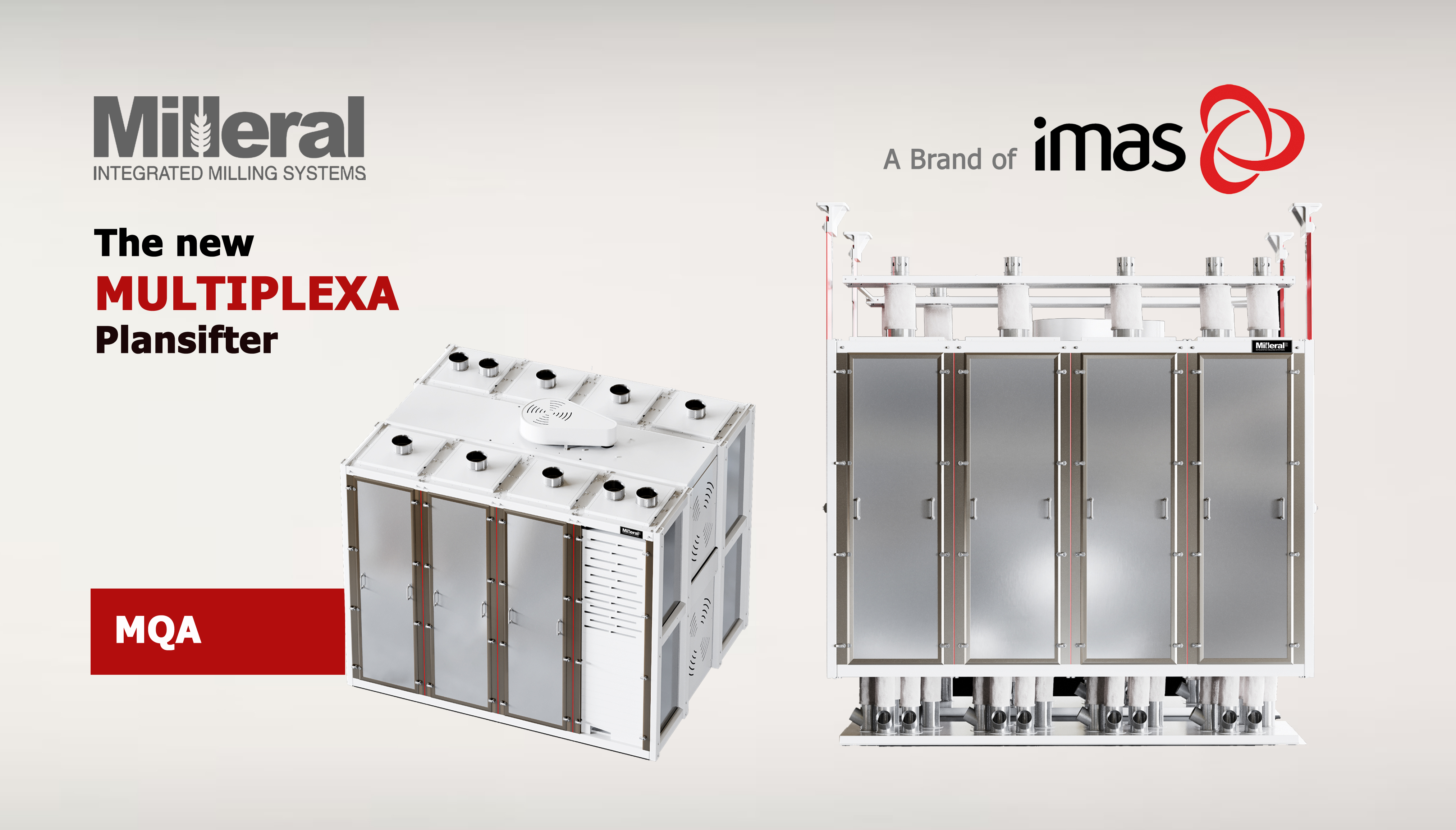Increased reliability, performance, sanitation, and insulation. The new Multiplexa plansifter presents all of them together with its improved industrial design in each single detail…
The new Multiplexa plansifter (MQA) is designed by Imas R&D team, with the synthesis of over 30 years experience in grain milling technology and new engineering standards… Officially introduced in March 2024, the new Multiplexa plansifter meets high capacity requirements in flour mills with models available for up to 10 passages.
Moreover, the new Multiplexa presents increased reliability, performance, sanitation, and insulation all together for its users, thanks to significant design improvements.
Developed using software-based testing and analysis methods
Finite Element Analysis (FEA) is used today as an indispensable part of the engineering world, especially in the defense and aerospace industries.
Imas R&D team utilizes the latest FEA virtual modelling technology for the dynamic behaviour analysis on plansifters, and measuring the performance with the similation of real operating conditions. Then, various validation tests are carried out with prototype sifters at the manufacturing plant (strain gauge, acceleration, and tension points etc.) to verify the performance under the actual load. Developed using the latest technology and comprehensive range of testing methods, that the new Multiplexa is designed with a matchless strength.
DRIVE SYSTEM
Performance
Multiplexa presents non-stop and trouble-free operation thanks to its strong drive system. The weight chassis of the drive system is made of a three-layered steel sheet, in order to provide high durability against excessive vibrational loads. Also, balance springs are used on the top and bottom of housings and ball bearings, which balance and distribute the operational load, and provide a safe operation.
Central Lubrication System
The new Multiplexa plansifter is equipped with a central lubrication system for bearings in the drive system, which provides ease and functionality in the periodic maintenance operation.
STRUCTURE
Produced with ‘No Welding’
The traditional manufacturing method of a plansifter chassis is to use welding in joints, which may result in cracks, wears, and tears over time. The ‘No Welding’ design of the new Multiplexa plansifter helps eliminating standardization problems by welding during manufacturing.
In this method, special aluminium extrusion profiles and cast iron top/bottom frames of the plansifter are connected to each other with a special screwing technique. And, this structure provides excellent geometric precision, advanced insulation properties, and extended long-term durability for the new Multiplexa, as well as its easy sieve replacement.
INCREASED INSULATION
The new Multiplexa plansifter’s isolation thickness in passage walls and doors has been increased from 5 mm up to 14 mm, compared to previous models. This provides optimal thermal insulation in the plansifter and prevents high internal temperatures, condensation, and food safety related risks accordingly.
SANITATION
The plansifter provides excellent sanitary conditions with its increased insulation, as well as excellent impermeability against microorganisms and similar hygiene problems.
Also, all interior walls in contact with the product can be covered with stainless steel insulation (optional), which significantly reduces condensation. This is especially a perfect solution for B1- B2 passages under high ambient humidity and temperatures.
Increased Distance of Flow Channels
The distance between the plansifter passage walls and sieve boxes is increased by around 40% (from 45 mm to 63 mm) in order to ensure smooth product flow and better sanitary conditions in the plansifter.
Rounded Corners
All internal corners of passage walls, doors , and tension boxes of the plansifter are rounded with a wide radius. This prevents against product adhesion or accumulation, contamination, molding, etc. risks, and provides better sanitation.
New Design of Passage Doors
Laminated chipboard passage doors are still used by many manufacturers, however they can be deformed easily over time due to humidity in the working environment. The new Multiplexa has its stainless steel coating on passage doors, along with an increased isolation thickness.
Industrial type leakproof rubber sealings are used on passage doors, which can also be easily replaced.







